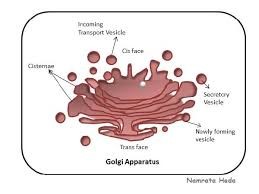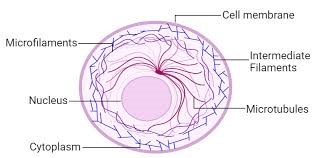During which phase does DNA synthesis occur?
G1
G2
M.
S
Correct Answer : D
DNA synthesis, or DNA replication, occurs during the S phase of the cell cycle. The cell cycle is the series of events that a cell undergoes as it grows and divides into two daughter cells. The S phase is the phase of DNA synthesis, during which the cell replicates its DNA to ensure that each daughter cell receives a complete set of genetic information. After DNA replication in the S phase, the cell proceeds to the G2 phase, where it prepares for cell division by checking for errors in DNA replication and synthesizing proteins necessary for mitosis or meiosis.
HESI A2 Exam Quiz Bank
TEAS 7 Exam Quiz Bank
Find More HESI Questions
HESI A2 Questions: We got the latest updated HESI A2 Questions
100% Money Refund: 100% money back guarantee if you take our full
assessment pass with 80% and fail the actual exam.
Live Tutoring: Fully customized live tutoring lessons.
Guaranteed A Grade: All students who use our services pass with 90%
guarantee.
Related Questions
Correct Answer is A
Explanation
Gametes, the reproductive cells (sperm and eggs) of diploid organisms, contain half the number of chromosomes found in somatic cells. In a diploid organism with a chromosome number of 46, the gametes would contain 23 chromosomes. This reduction in chromosome number is achieved through the process of meiosis, which produces haploid gametes from diploid precursor cells. During meiosis, the chromosome number is halved through two rounds of cell division, resulting in the formation of four haploid daughter cells, each with half the original chromosome number.
Correct Answer is A
Explanation
The magnification of a standard ocular lens on a light microscope is typically 10X. The ocular lens, also known as the eyepiece, is the lens closest to the observer's eye. It magnifies the image produced by the objective lens, which is the lens closer to the specimen being observed. Together, the ocular lens and the objective lens determine the total magnification of the microscope. The standard ocular lens provides a magnification of 10X, meaning it magnifies the image by a factor of 10 compared to the naked eye.
Correct Answer is B
Explanation
The Golgi apparatus, also known as the Golgi complex or Golgi body, serves to package and transport molecules throughout the cell. It is a membrane-bound organelle composed of flattened sacs called cisternae. The Golgi apparatus receives newly synthesized proteins and lipids from the endoplasmic reticulum (ER) and modifies, sorts, and packages them for delivery to their final destinations within the cell or for secretion outside the cell. It also synthesizes certain macromolecules and produces lysosomes, specialized vesicles containing digestive enzymes. Overall, the Golgi apparatus plays a central role in intracellular trafficking and cellular communication.

Correct Answer is A
Explanation
The cytoskeleton is critical to cellular motility, providing structural support and facilitating movement within the cell. It is a dynamic network of protein filaments and tubules that extend throughout the cytoplasm, giving the cell its shape, organizing its internal structure, and enabling various cellular processes. The cytoskeleton is involved in cell motility through the interaction of its components, such as actin filaments, microtubules, and intermediate filaments, with motor proteins that generate force and movement. Cytoskeletal elements are responsible for processes such as cell crawling, cell division, intracellular transport, and the maintenance of cell shape and integrity.

This question was extracted from the actual HESI A2 Exam. Ace your TEAS exam with the actual HESI A2 Exam questions, Start your journey with us today
Visit Naxlex, the Most Trusted HESI Prep Platform With Guaranteed Pass of 90%.
Money back guarantee if you use our service and fail the actual exam. Option of personalised live tutor on your area of weakness.
